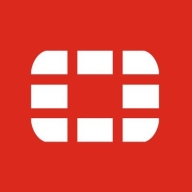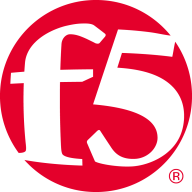

NGINX Plus and Fortinet FortiADC compete in the application delivery and load balancing category. NGINX Plus seems to have the upper hand due to its customizability and strong community support.
Features: NGINX Plus offers superior load balancing, reverse proxy capabilities, and integration options. Its modularity allows for advanced configuration. It is appreciated for its simplicity and stability. Fortinet FortiADC provides robust global server load balancing, SSL offloading, and integrates seamlessly with FortiOS, which enhances its security features.
Room for Improvement: NGINX Plus could benefit from enhanced cluster management, a more user-friendly interface, and improved pricing structure. Users indicate a need for better health checks and scalability features. Fortinet FortiADC requires a more intuitive setup process, improved support responsiveness, and expanded security features, with its complex configuration and documentation needing refinement.
Ease of Deployment and Customer Service: NGINX Plus is flexible, supporting deployment across public, hybrid, and on-premises environments, with robust community support. However, official support response times can be slow for lower-tier licenses. Fortinet FortiADC primarily supports on-premises and private cloud setups. Its deployment ease varies by environment, with users seeking more detailed documentation for smoother implementation.
Pricing and ROI: NGINX Plus has a mix of free and paid options, with a debatable affordability versus feature set. It may be costly but justified by enhanced capabilities. Fortinet FortiADC offers competitive pricing, often cheaper than alternatives, with straightforward licensing praised for being cost-effective for large deployments, offering clear ROI through its features and scalability.
The alert system is efficient, sending alerts within a fraction of a second if any power issues arise.
The support team is knowledgeable and efficiently assists with automation and configuration problems.
The service is helpful yet not excellent.
It is scalable for some versions, however, as components reach their end of support, upgrades are necessary to maintain scalability.
While some people use NGINX for web servers, my current use case focuses on networking and tunneling, which does not necessitate much scaling.
The support system is reliable when issues like automation or configuration arise.
I require ninety-nine point nine percent uptime, and NGINX has been pivotal in helping me achieve this along with our other DNS services.
The limitation of managing all components and the differing versions pose challenges.
If I need design help, they do not assist; they say it is a design issue they cannot support, and I must approach the system integrator.
NGINX could provide a means to generate self-signed SSL certificates.
As with any application, there were initial issues, however, after receiving support, everything was rectified.
This solution is quite expensive compared to Kemp.
My use case involves using the free and open-source version of NGINX, making it cost-effective as I haven't incurred any costs.
The solution offers a cost advantage.
I use server load balancing and employ layer seven features, which provide more granular traffic shaping and detailed logs.
FortiADC provides load-balancing capabilities needed for integration with other Fortinet platforms.
For API management, the WebSocket, and the WebServer, NGINX provides a cost advantage, value addition, and effective support.


Fortinet FortiADC is a robust application delivery controller (ADC) that delivers application optimization, application security, and application availability. FortiADC is a valued offering from Fortinet, which is widely recognized as a trusted supplier of dynamic security solutions worldwide. FortiADC offers dynamic security functions (AV, DDoS, and WAF) in addition to advanced application connectors for a simplified deployment and complete transparency to an organization's networks and applications. FortiADC offers three primary deployment options: physical machine, virtual machine, (VM) and cloud solution options.
Fortinet FortiADC Benefits
Fortinet FortiADC Features
NGINX Plus is a versatile solution that offers load balancing, caching, proxying, and API deployment capabilities. It can be deployed on private or public clouds and is ideal for building CDN solutions. The solution can also be used to secure web applications and replace web services like Apache.
NGINX has helped organizations improve functioning, reduce downtimes, and offer a DevOps-friendly solution. Its community support and documentation are highly regarded, and its configuration is more straightforward, making it a recommended choice over HAProxy.
We monitor all Application Delivery Controllers (ADC) reviews to prevent fraudulent reviews and keep review quality high. We do not post reviews by company employees or direct competitors. We validate each review for authenticity via cross-reference with LinkedIn, and personal follow-up with the reviewer when necessary.